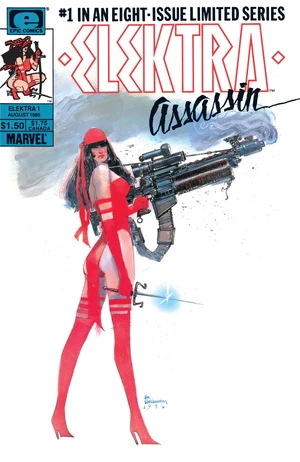
Elektra: Assassin was one of the foundational titles for Marvel’s relatively short-lived Epic line, which was designed to allow for more experimental storytelling with its main characters and also, more importantly, to support creator-owned original works as well. You could tell, right from the cover–a completely out-of-proportion gun and beautiful use of color–that this would be something very, very different. And definitely not drawn the “Marvel way.”

It was an influential cover.
It also marked artist Bill Sienkiewicz’s movement from the kind of obtuse-but-still-linear storytelling he worked on in New Mutants into a totally abstract, painted world where the words were just as strange and challenging as the images.
Issue #1 begins, as does every issue in this book, with a page one “recap” setting the stage for the events, but the unfolding of the story is decidedly nonlinear, being told by an unreliable narrator: Elektra herself, who is in a drug-induced brain fog and being held at a South American asylum after apparently trying to kill a foreign leader.
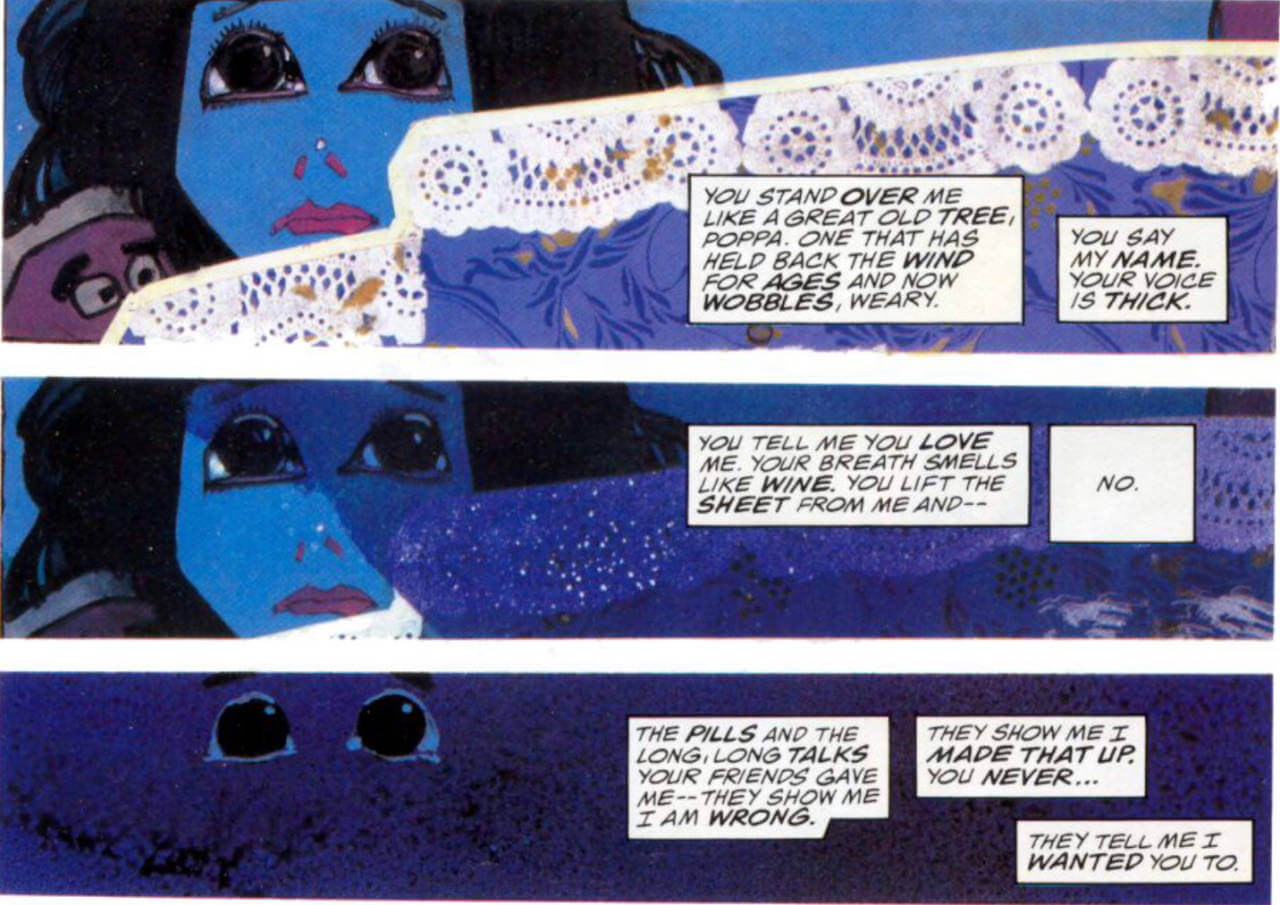
It’s implied that she was raped. Putting this out under the Epic banner also allowed for a much more adult take on superheroics, and the darkness is evident in the panel above.

Through flashbacks, Frank Miller delves deeper into Elektra’s past, starting with her birth–told in a brilliantly creative way that could only happen in comics.
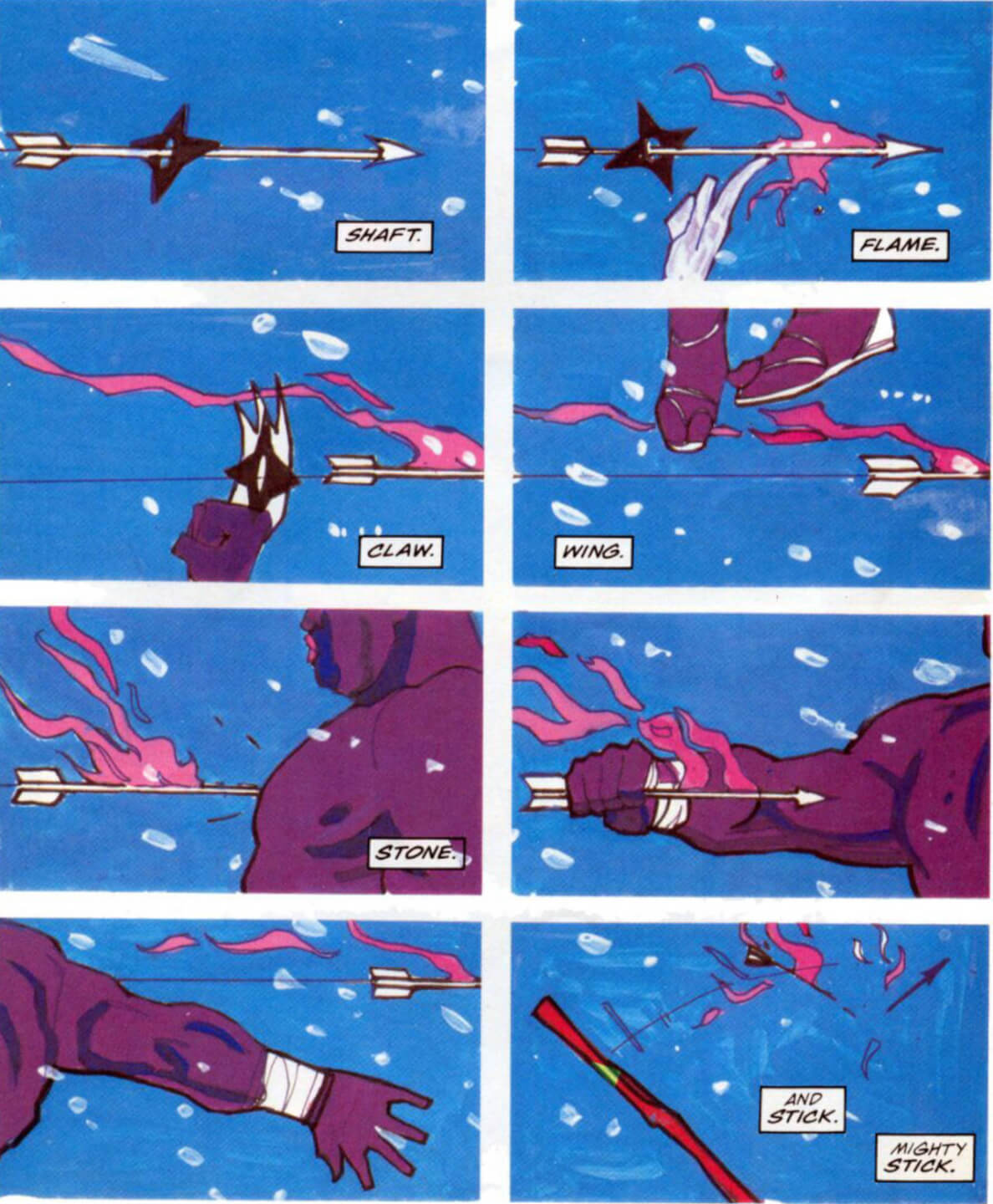
It then recaps her connection with Stick and his anti-hand ninjas—the same ones who brought her back from the dead after Bullseye killed her–and see her resurrection in the snow, all events from Frank Miller’s Daredevil run. The history is vague enough that more can be filled in later, but it’s a cool way to tie a story that seems so “out there” back into things that we, as loyal readers, can lock on to and understand.

We also meet “The Beast,” a demon who will be her enemy through this series.
By the end of the first issue, she escapes the facility, but as a reader we’re still not exactly sure what’s going on.

Issue #2 introduce Elektra’s pursuer, SHEILD Agent John Garrett, who is part of a special group of international actors who are trying to enable a demon called “The Beast” to become president in the form of a human named Ken Wind.

Ken Wind is a pretty generic-looking white politician.
The story is pretty simple: Elektra nearly kills Garrett, he becomes a Cyborg, and she still outwits him. He also appears to fall in love with her.
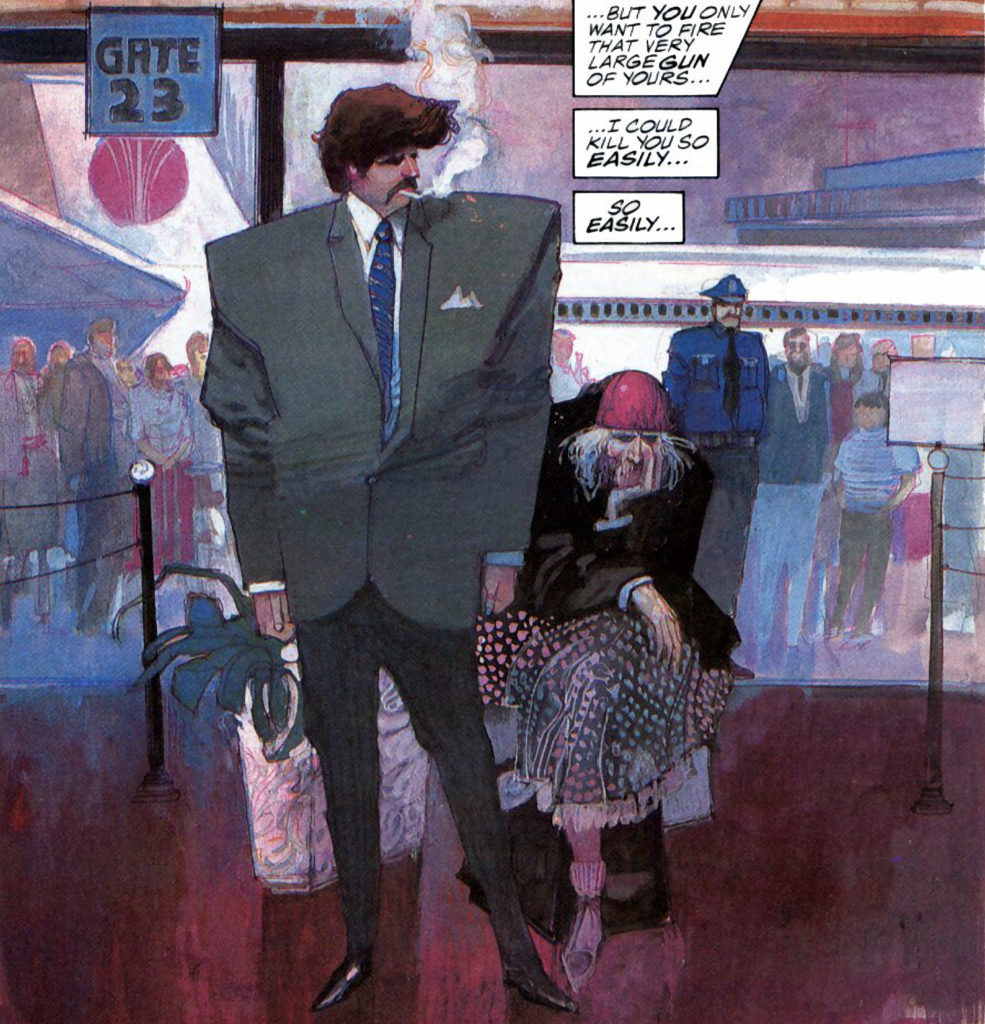
The big gun thing is clearly sexual.
Also, apparently Elektra’s biology has been altered.
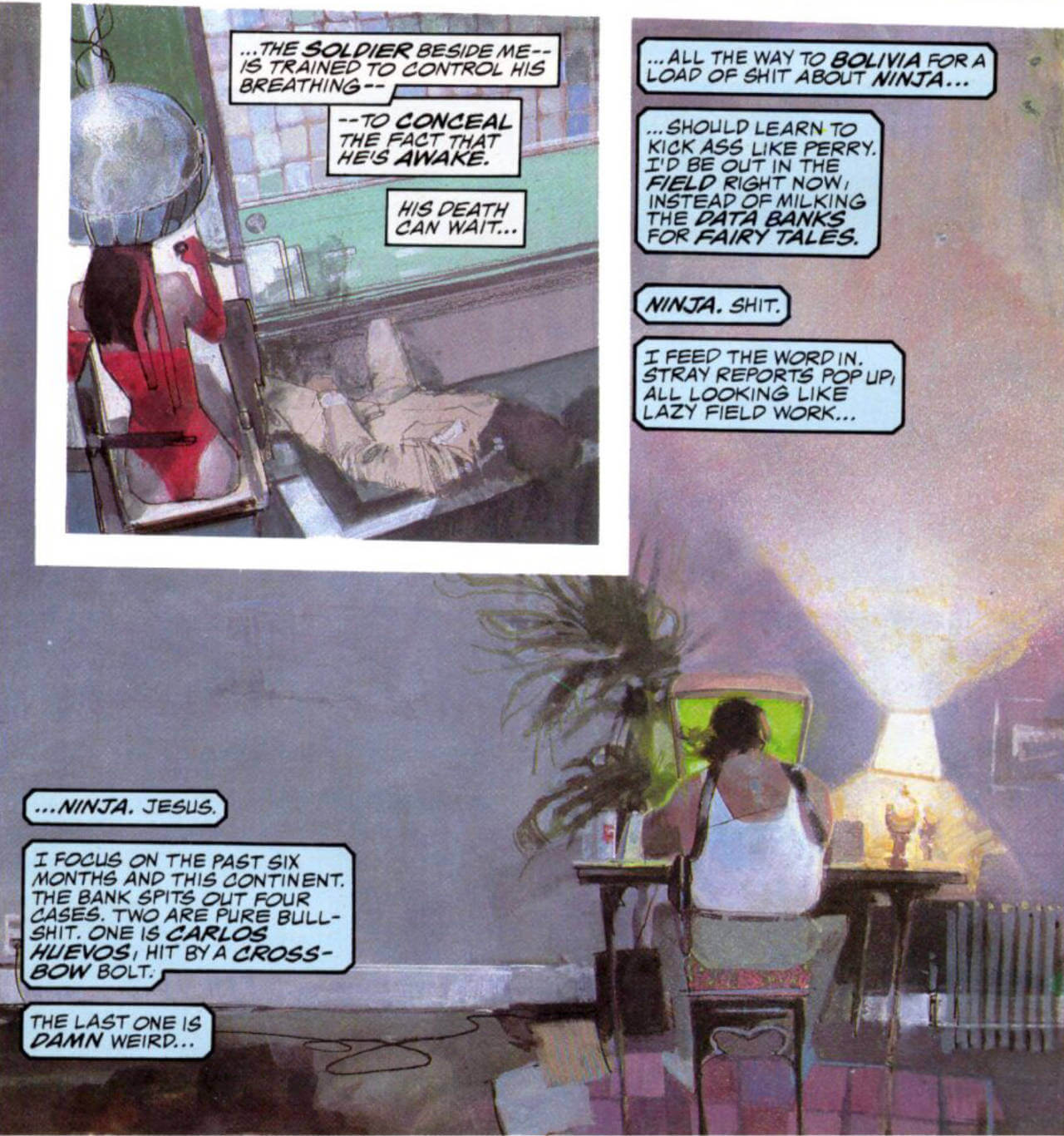
Some very interesting things are done with narrative, as the perspective now is shared between Elektra and Garrett, with each having their own “color” of narrative caption box. Garrett takes over a lot of the narration from here on out, as he is chasing down Elektra.

And, of course, she outwits him. Often.
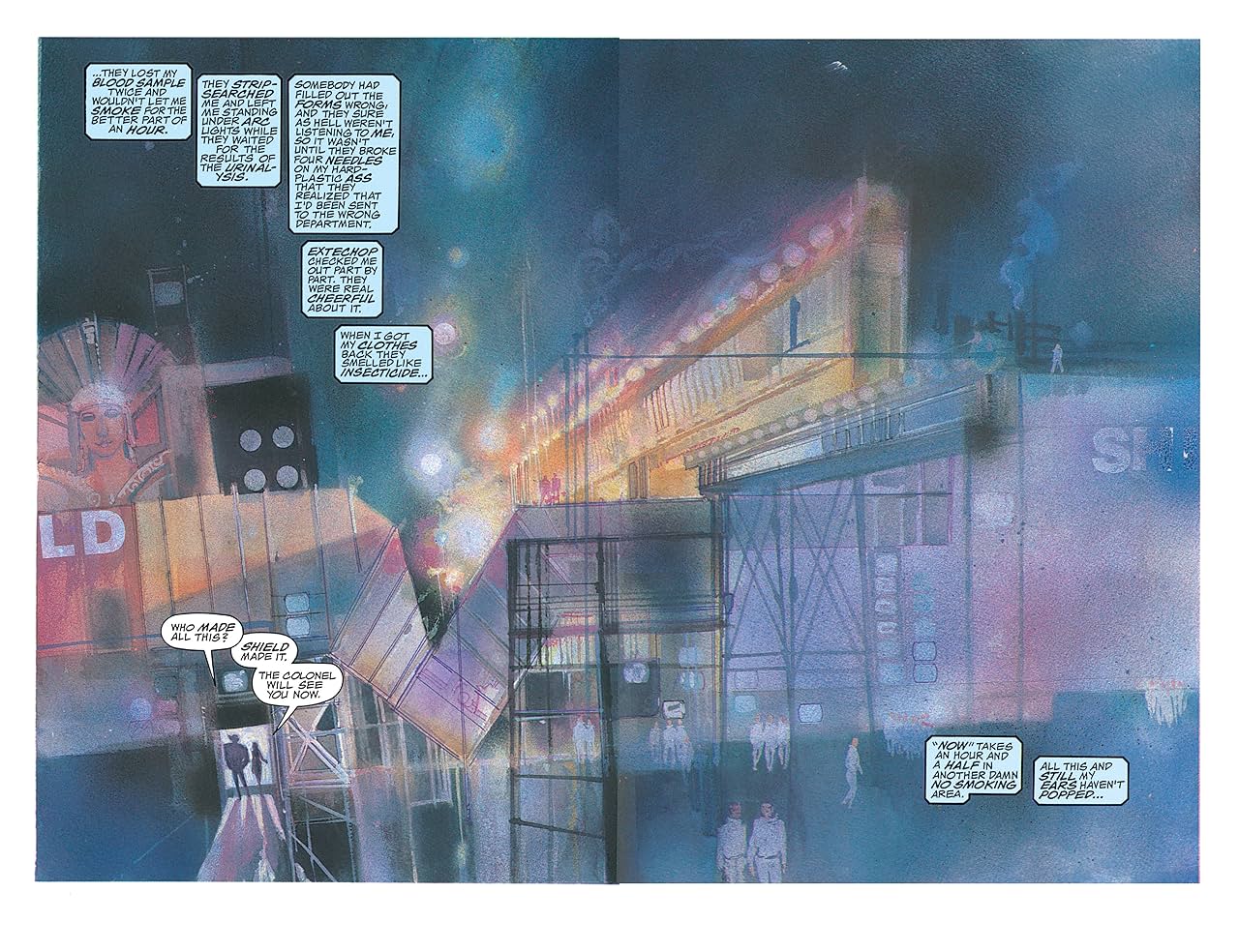
Issue #4 begins with us seeing how Agent Garrett is experiencing his new, cybernetically enhanced body.
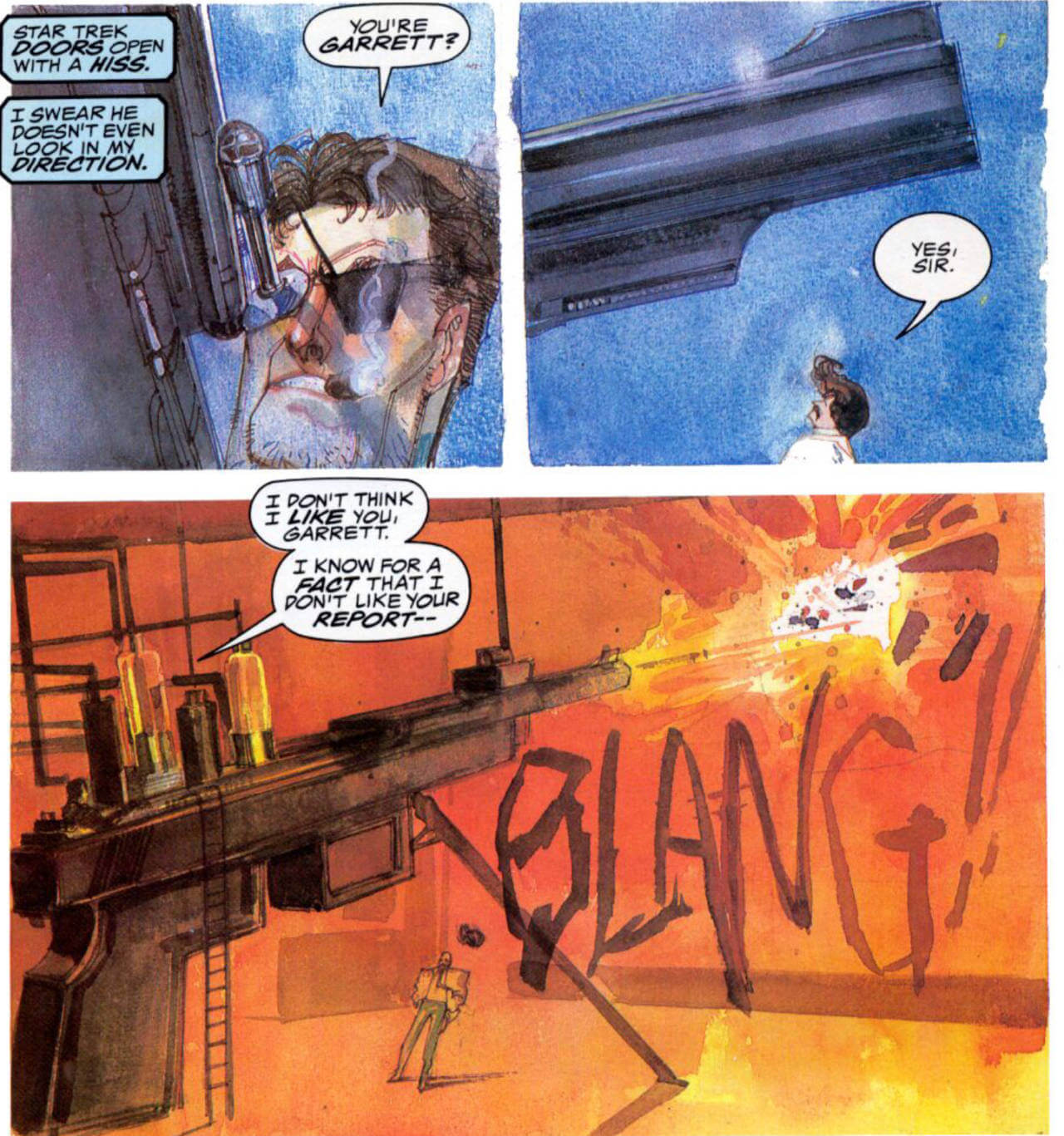
Then, Agent Garrett has a very surreal meeting with Nick Fury, in which Fury orders Garret to change his report on the South American incident to leave out Elektra. Despite her being under Fury’s protection, Garrett is now obsessed and in love, so he continues to track her—and the two appear to be developing a psychic bond.
Turns out, though, Fury was setting Garrett up to look like he was partnering with Elektra in a plot to assassinate Presidential candidate Ken Wind, who it appears has one goal when he becomes President: Nuke Russia.
Fury puts a new agent, Chastity McBride, on the case to protect Wind from Elektra and Garrett.
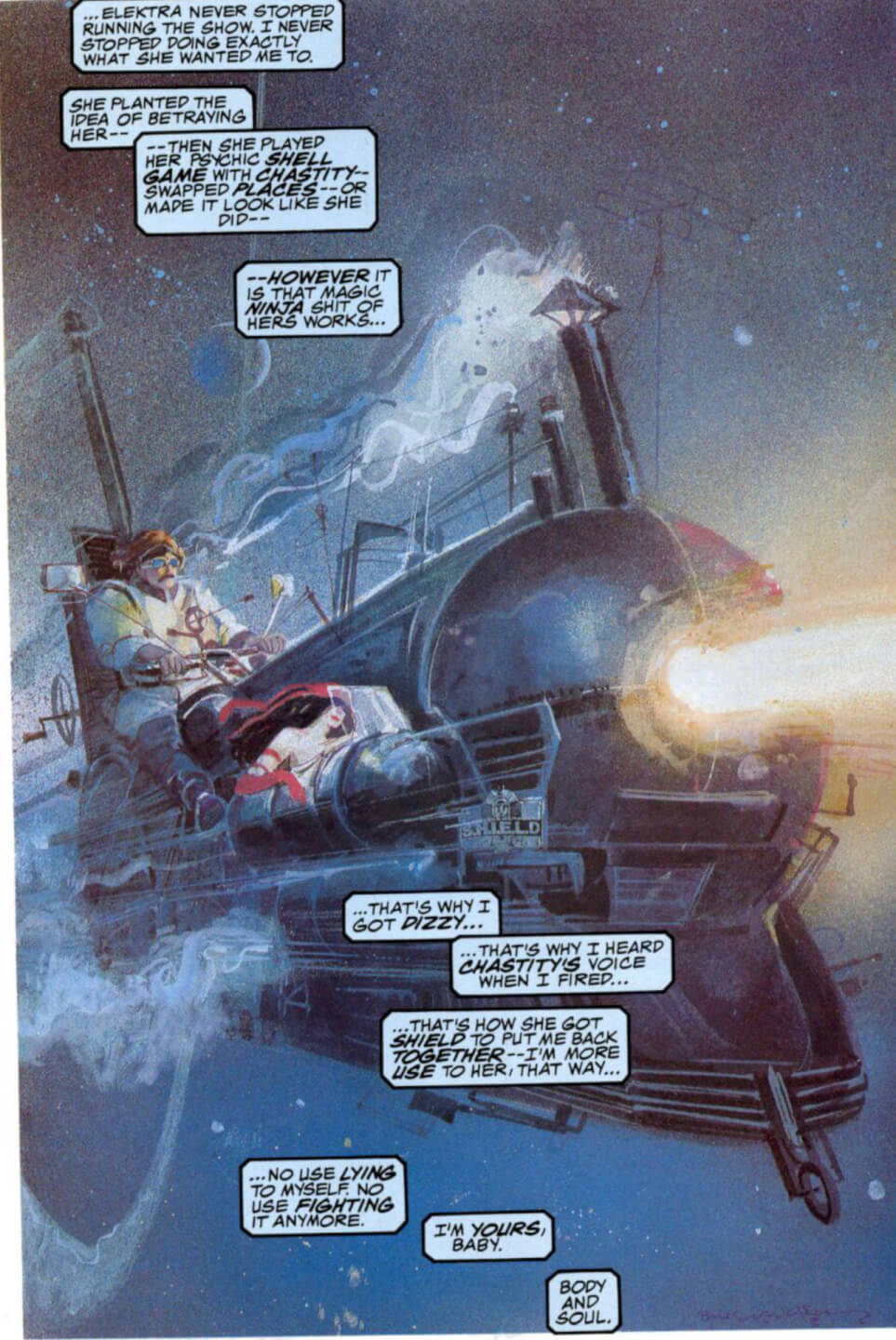
But in the end of issue #5, Elektra escapes, Garrett is completely hers (either due to mind control or he’s just infatuated), Chastity is dead, and E&G ride off on a locomotive.
We haven’t seen Elektra having psychic powers before this series.
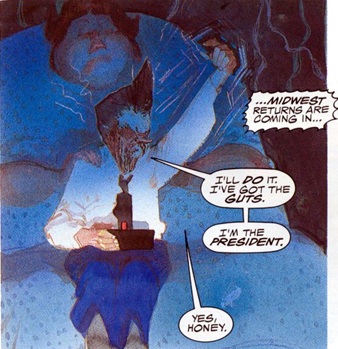
Anyway, we see the real President with his enormous wife (shades of Pink Floyd: The Wall here), cradling the button and it looks like Richard Nixon. That would mean this story takes place before Frank Miller’s run on Daredevil, which kind of makes sense because Elektra is in red, not white.
So how does it end?
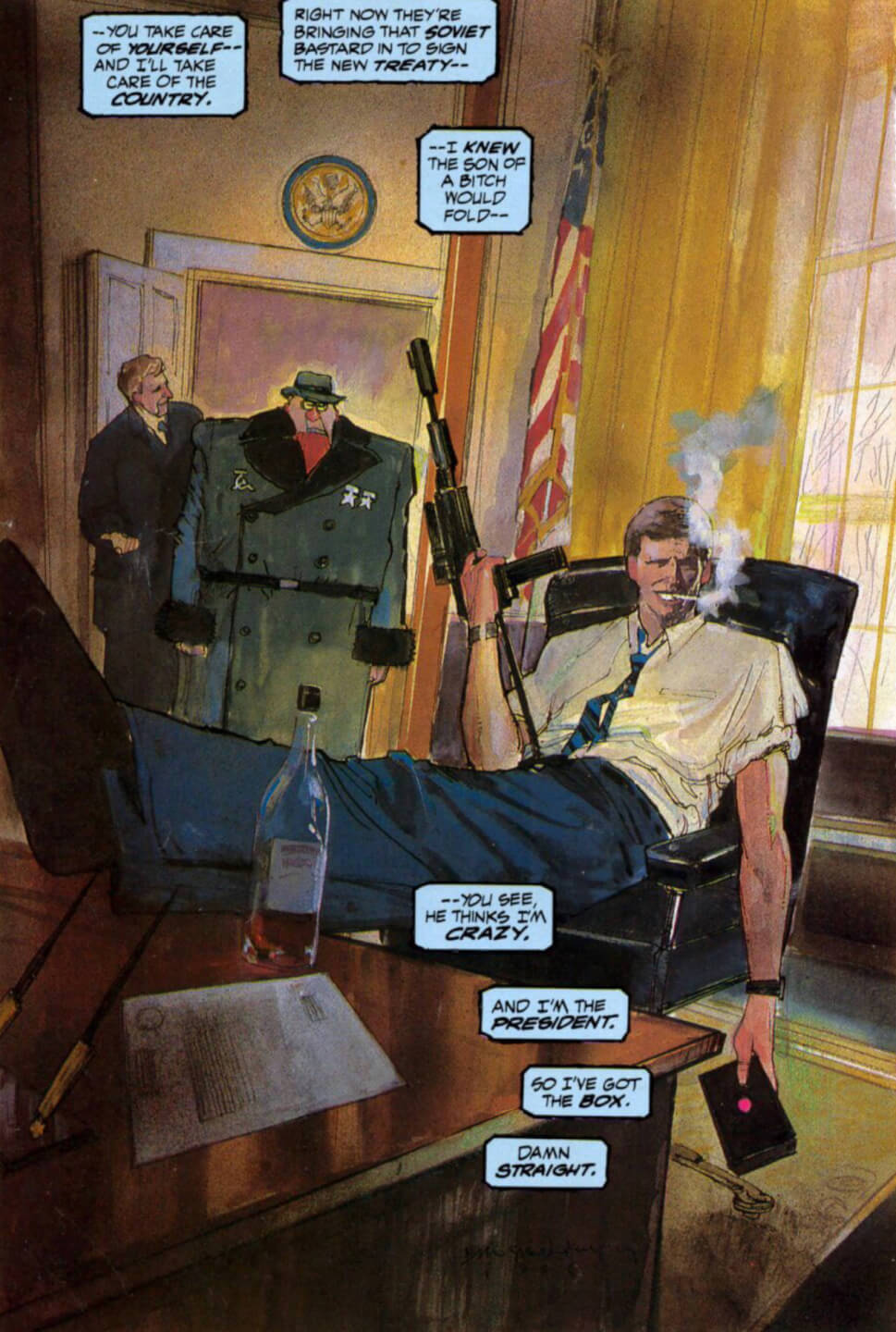
The last three issues can be summed up basically by saying that the evil demon The Beast manages to get his candidate, Ken Wind, elected President, but Elektra outsmarts the Beast by replacing Ken Wind’s brain with the brain of Agent Garrett—thus foiling the Beast’s plan to blow up the Earth.
And that’s how it ends, with Ken “Garrett” Wind at the oval office, feet up.
Not sure that’s canon.
Elektra: Assassin doesn’t have a ton of story—it’s really more about experimenting with how to tell a story than telling a story itself. With all the mind-switching and changes of narrative-box points-of-view, the series constantly keeps the reader off-balance. Couple that with the representational and abstract art of Bill Sienkiewicz and you’ve got a work of art that’s still avant garde by today’s standards.
Excellent stuff, and well worth reading. Elektra Assassin is one of the top 10 Frank Miller comics of all time.
Note: We learn this series is not canon here.
